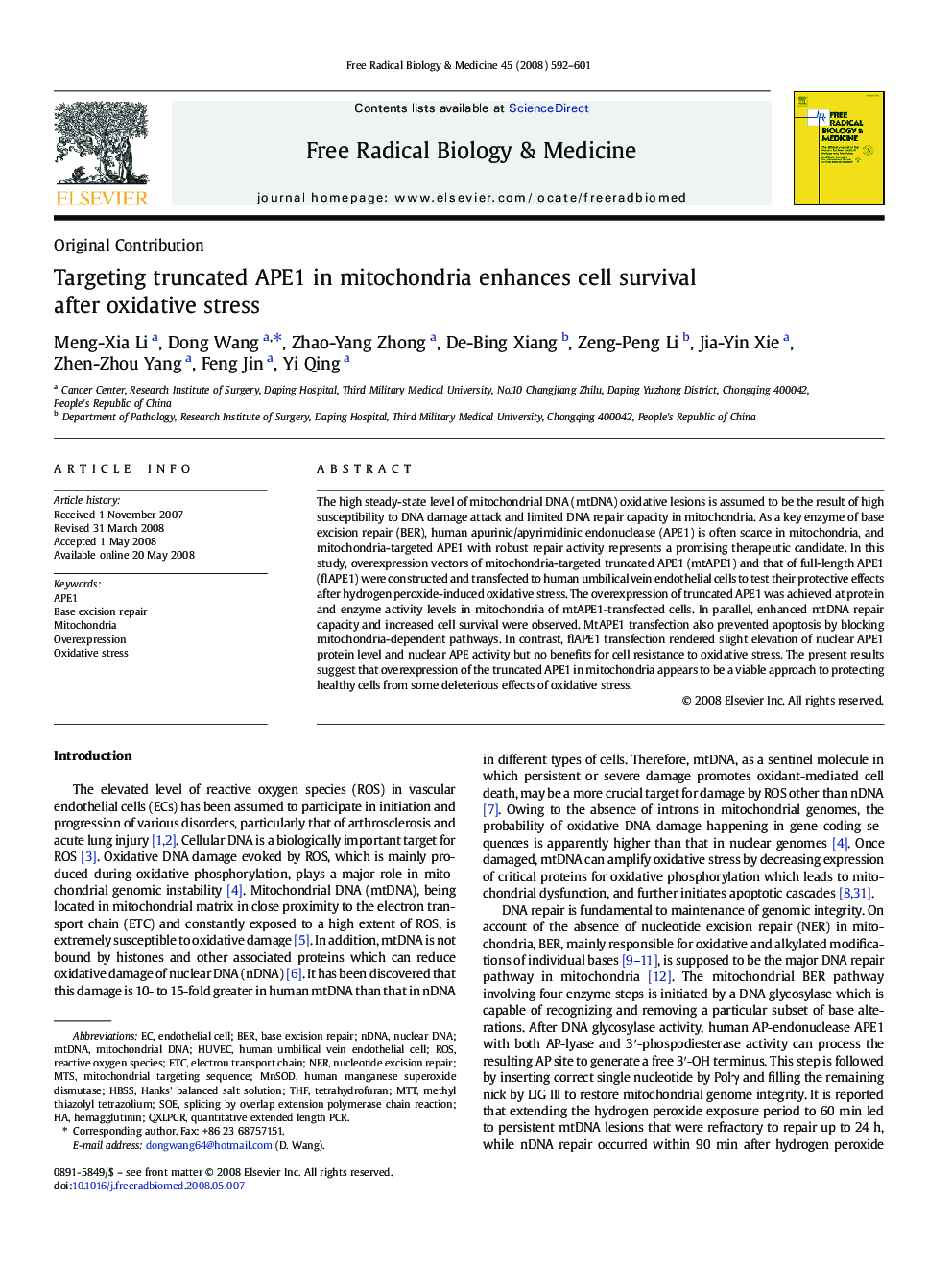| Article ID | Journal | Published Year | Pages | File Type |
|---|---|---|---|---|
| 1910836 | Free Radical Biology and Medicine | 2008 | 10 Pages |
The high steady-state level of mitochondrial DNA (mtDNA) oxidative lesions is assumed to be the result of high susceptibility to DNA damage attack and limited DNA repair capacity in mitochondria. As a key enzyme of base excision repair (BER), human apurinic/apyrimidinic endonuclease (APE1) is often scarce in mitochondria, and mitochondria-targeted APE1 with robust repair activity represents a promising therapeutic candidate. In this study, overexpression vectors of mitochondria-targeted truncated APE1 (mtAPE1) and that of full-length APE1 (flAPE1) were constructed and transfected to human umbilical vein endothelial cells to test their protective effects after hydrogen peroxide-induced oxidative stress. The overexpression of truncated APE1 was achieved at protein and enzyme activity levels in mitochondria of mtAPE1-transfected cells. In parallel, enhanced mtDNA repair capacity and increased cell survival were observed. MtAPE1 transfection also prevented apoptosis by blocking mitochondria-dependent pathways. In contrast, flAPE1 transfection rendered slight elevation of nuclear APE1 protein level and nuclear APE activity but no benefits for cell resistance to oxidative stress. The present results suggest that overexpression of the truncated APE1 in mitochondria appears to be a viable approach to protecting healthy cells from some deleterious effects of oxidative stress.
